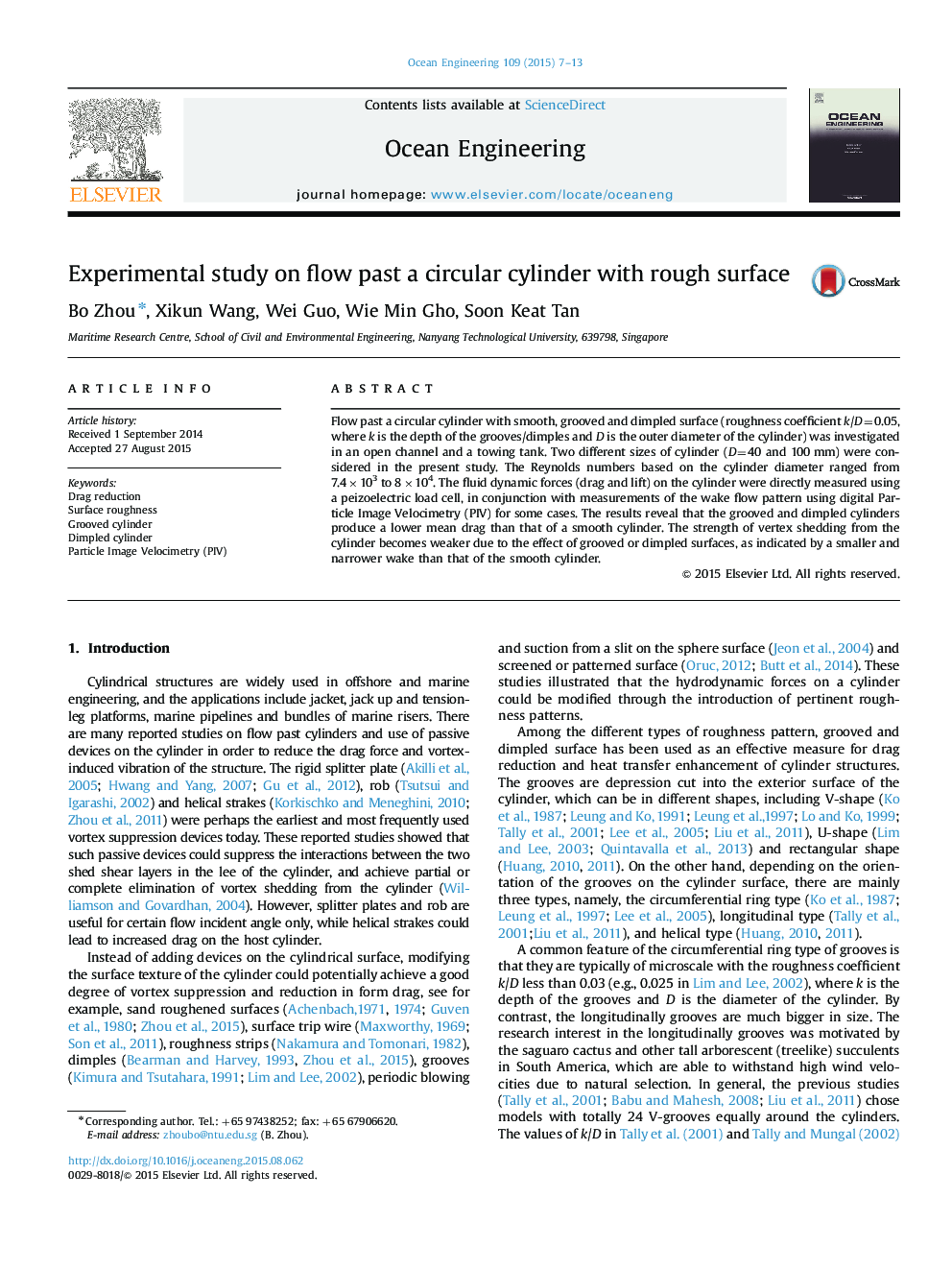| Article ID | Journal | Published Year | Pages | File Type |
|---|---|---|---|---|
| 8065066 | Ocean Engineering | 2015 | 7 Pages |
Abstract
Flow past a circular cylinder with smooth, grooved and dimpled surface (roughness coefficient k/D=0.05, where k is the depth of the grooves/dimples and D is the outer diameter of the cylinder) was investigated in an open channel and a towing tank. Two different sizes of cylinder (D=40 and 100Â mm) were considered in the present study. The Reynolds numbers based on the cylinder diameter ranged from 7.4Ã103 to 8Ã104. The fluid dynamic forces (drag and lift) on the cylinder were directly measured using a peizoelectric load cell, in conjunction with measurements of the wake flow pattern using digital Particle Image Velocimetry (PIV) for some cases. The results reveal that the grooved and dimpled cylinders produce a lower mean drag than that of a smooth cylinder. The strength of vertex shedding from the cylinder becomes weaker due to the effect of grooved or dimpled surfaces, as indicated by a smaller and narrower wake than that of the smooth cylinder.
Related Topics
Physical Sciences and Engineering
Engineering
Ocean Engineering
Authors
Bo Zhou, Xikun Wang, Wei Guo, Wie Min Gho, Soon Keat Tan,
